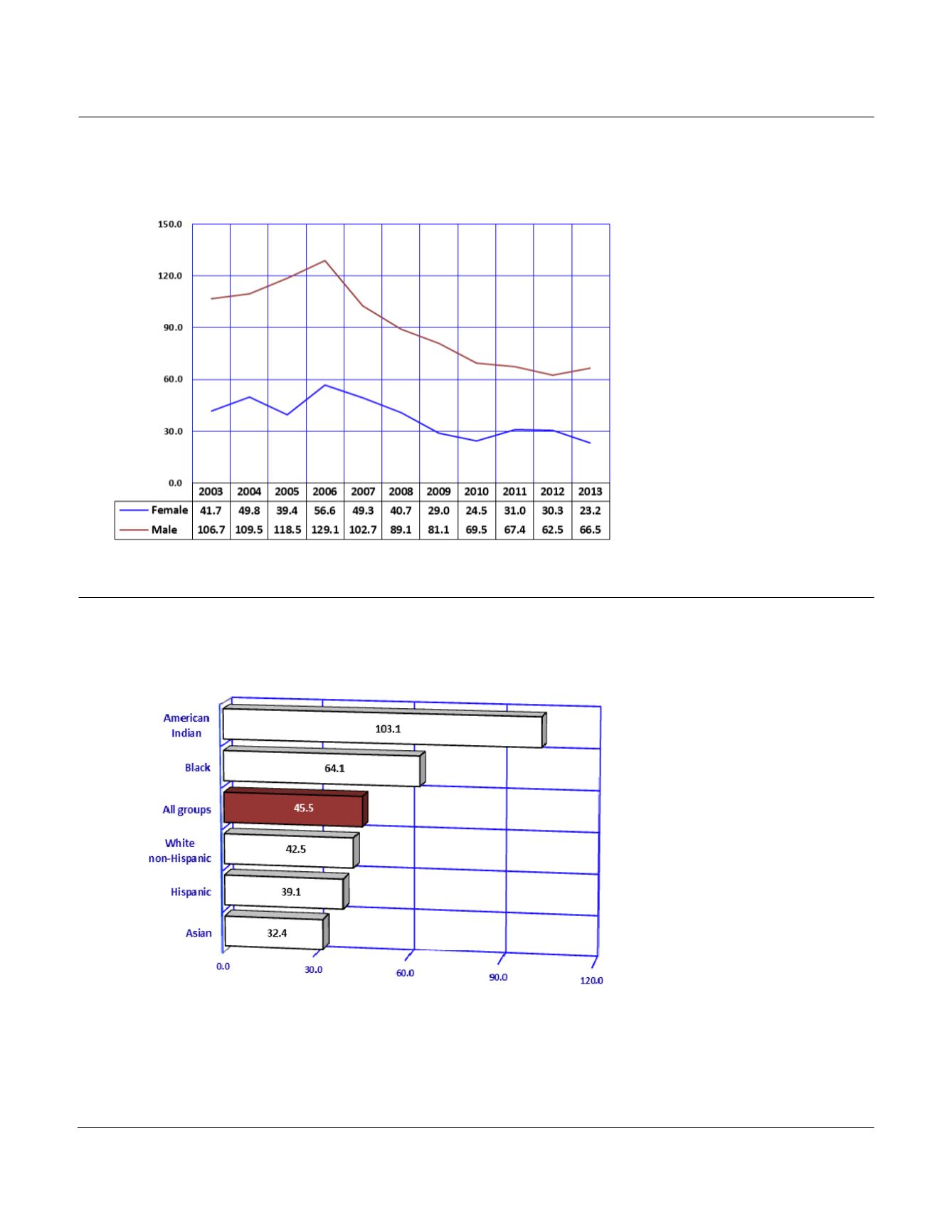
2C.AGE-SPECIFICMORTALITY
Adolescentmortality (ages 15-19 years)
Figure2C-9
MortalityRates
a
byGender andYear amongAdolescents 15-19Years,
Arizona, 2003-2013
Notes:
a
Number of deaths per 100,000 persons, 15 - 19 years old in specified group.
Adolescence
refers
to
individuals between the ages
of 15 and 19, an important
developmental period marking
the transition from childhood
to adulthood. In 2013, an
estimated 470,793 adolescents
resided in Arizona, comprising
7.2 percent of the State?s
population (
Table 10A-1
).
The lives of 214 resident
adolescents prematurely ended
in 2013, resulting in a total
mortality rate of 45.5 deaths
per 100,000 adolescents. This
mortality rate was 39.7
percent lower than the 2003
rate (
Table2C-11
).
The likelihood of dying was 2.9
times greater for adolescent
boys than for adolescent girls
in 2013 (
Figure 2C-9
,
Table
2C-11
).
Figure2C-10
MortalityRates
a
byRace/Ethnicity amongAdolescents 15-19Years,
Arizona, 2013
Notes:
a
Number of deaths per 100,000 persons, 15 - 19 years old in specified group.
The five causes with the
greatest number of deaths
over the 2003-2013 period
were
unintentional injuries in
accidents
,
suicide
,
homicide
malignant neoplasms
, and
symptoms,
signs,
and
abnormal findings
(
Table
2C-14
).
In 2013, adolescents who
were Asian, Hispanic, or
White non-Hispanic had
greater survival chances than
the state average for all
adolescents, while American
Indian and Black adolescents
had lower survival chances
than average (
Figure 2C-
10
). If the 2013 mortality
risk of Asian adolescents
(i.e., their mortality rate)
applied to all adolescents,
only 153 would have died: 61
less than the 214 who
actually did.
The number of deaths from
accidental drug poisoning
declined from 39 in 2009 and
25 in 2011 to 18 in 2012, but
rose to 25 in 2013.
162
Arizona Health Status and Vital Statistics 2013


